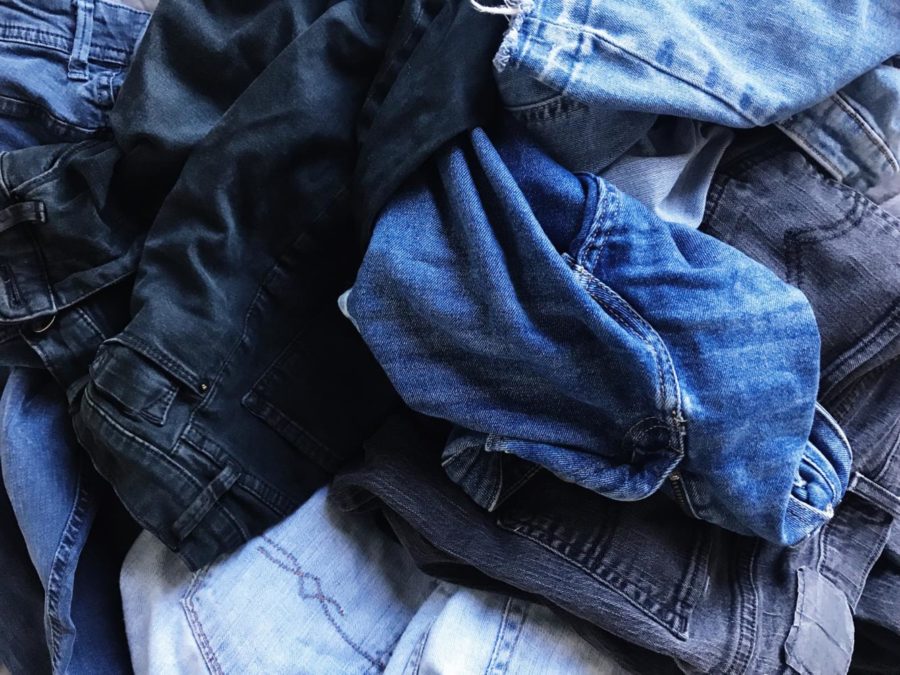
By: Savi Raghuraman | Student Life Editor
January 19, 2017
The clothing industry has created an environmental crisis in recent history. Out of all industries, fashion uses the second largest amount of water and is responsible for the third largest amount of pollution. Some of the huge companies churning clothes out of factories by the billions have questionable ethics, with many employees working in hazardous conditions for low pay. Fast fashion companies like Forever 21 and H&M are some of the worst offenders: their ridiculously low prices and expansive selection of items take a devastating toll on both the environment and their factory workers. And the problems don’t stop there. With such quick trend cycles, new styles are constantly coming and going. This means Americans now have far more unwanted clothes, 84% of which go to a landfill, produce the greenhouse gas methane as they degrade, and gradually release chemicals from their production into the air and often groundwater.
Junior Shea Zeni hadn’t heard about the growing problem with clothing before. “I never knew that the industry had such a large impact,” she remarked. Shea is just one of many Americans of all ages in the dark on this subject. It is easy to ignore this grim reality since we never come face-to-face with it ourselves. With more focus on climate change and finding ways to slow it, however, the fashion industry’s irresponsible practices have come under scrutiny by the environmentally conscious. In response, shoppers looking to support positive change with their purchases have begun searching for more sustainable clothing brands.
A small but steadily growing branch of the fashion industry exists for the very purpose of enacting positive, environmentally-friendly change in the industry. These companies use many labels— “ethical,” “conscious,” “eco-friendly,” “slow fashion”—but each displays a commitment to do right by our environment and all of the people that live in it. Not only are the production processes of sustainable clothing companies less wasteful, but they tend to choose natural, quality fabrics to make pieces that last longer, which encourages consumers to buy new clothes less often and produce less textile waste in the long run.
The sustainable clothing movement provides better quality clothing that rests easy on the conscience. So why hasn’t shopping consciously become the norm for Americans everywhere ? It all comes down to money. Unlike the many fast fashion companies that take advantage of their workers and the environment to cut costs, sustainable brands adhere to the strict guidelines for their certified organic crops and pay their employees fairly, resulting in greater expenses for the companies that are factored into price. Although exceptions do exist, eco-friendly brands on the cheaper end of the spectrum generally sell shirts for upwards of $50 and pants and dresses for upwards of $100. Experts suggest that, similarly to what happened with the organic food movement, sustainable brands will be able to lower their prices gradually as they start acquiring more business and a larger following over the years. Plus, although currently the majority of sustainable clothing must be bought online as most companies aren’t big enough to open stores yet, its increasing popularity means that more products will become accessible in person in the near future.
Sam Bregman, a junior, suggests thrifting as another eco-friendly shopping option, describing, “Most of my clothes come from thrift stores, Salvation Army, and Goodwill, and I also do a lot of secondhand shopping on online sites like Depop. It’s great shopping this way because I can find more unique clothes for less money.” Buying used clothes means that none of the cost goes to support the wasteful enterprise of clothing production; instead, the buyer saves a garment that might otherwise go to a landfill.
However you choose to shop, be educated on what effect your purchases will have. An item that seems like an amazing deal may have a hidden cost that the earth has to pay.

Great article. We all seem very conscious and are getting better at recycling almost everything. But for fast fashion items. The marketing blitz and money behind these big brands is staggering. Some alternatives and trends are emerging. https://www.entrepreneur.com/article/233920
One hopes they become fashion.
Your blog is a treasure trove of wisdom and positivity I appreciate how you always seem to know just what your readers need to hear